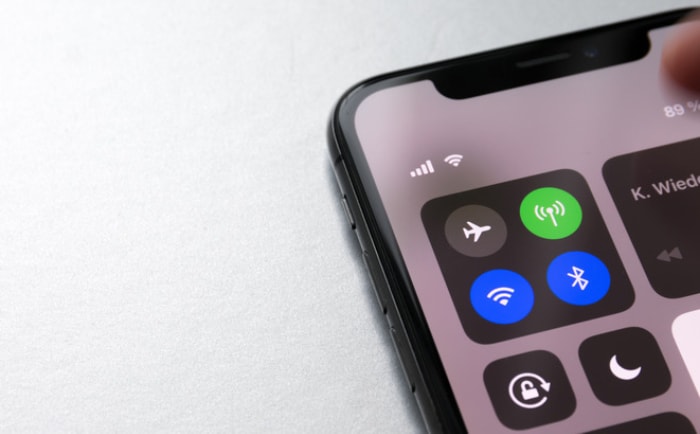What Is Spyware? What You Need to Know

Something sinister may be lurking just beneath the surface of your screen, silently recording every keystroke and tracking every click. This invisible intruder is known as spyware, a malicious type of software designed to infiltrate your devices without your knowledge.
Its mission is to capture your most sensitive information, from banking passwords and credit card numbers to private messages and confidential business documents. The data it collects is then sent to third parties who can use it for identity theft, financial fraud, or corporate espionage.
Defending your privacy and security from this pervasive threat starts with recognizing how it operates, the forms it takes, and the steps needed to stop it.
What Is Spyware?
At its most basic level, spyware is software installed on a device without the user's full knowledge or explicit permission. It is a form of malware that prioritizes stealth, running quietly in the background to avoid detection.
Its scope ranges from relatively harmless programs that track web browsing habits for advertising purposes to highly malicious applications that record keystrokes, steal banking information, and access private files. The defining element is its unauthorized presence and hidden data collection.
Core Functions of Spyware
The fundamental purpose of spyware is to observe and record. It systematically monitors user behavior, capturing a wide array of sensitive information.
Common targets include login credentials, credit card numbers, browsing history, and email contents. After collecting this data, the software sends it to a remote server controlled by the attacker.
This information is then often sold to data brokers, used by advertisers for targeted campaigns, or exploited by cybercriminals for identity theft and other fraudulent activities.
The Line Between Spyware and Legitimate Monitoring
A distinction exists between spyware and legitimate tracking software. Many applications, such as parental control tools or corporate device managers, monitor activity with the device owner's explicit consent for a stated purpose.
The boundary becomes less clear with “potentially unwanted programs” (PUPs), which may be bundled with legitimate software and perform tracking functions disclosed in fine print. Another related threat is stalkerware, an insidious variant often installed on a mobile phone by someone known to the victim to secretly monitor their location, conversations, and personal life.
The critical factors that separate these tools from true spyware are informed consent and malicious intent.
How Spyware Works

Spyware operates through a methodical, three-stage process designed for maximum secrecy and effectiveness. It must first find a way onto a device, then establish a persistent presence while avoiding detection, and finally, begin its mission of collecting and sending information back to its operator.
Each stage relies on deception and technical tricks to exploit system vulnerabilities and human behavior.
Infiltration Methods
Spyware employs several tactics to infiltrate a device without arousing suspicion. One of the most common methods is through bundled software installers, where the spyware is packaged with a legitimate, often free, program.
Users unknowingly agree to install it when they accept the terms and conditions without careful review. Another frequent entry point is social engineering, which manipulates users into voluntarily installing the software.
This can happen through phishing emails containing malicious links, deceptive pop-up ads claiming a system is infected, or fake software updates that install the spyware instead of a legitimate patch. More advanced spyware may use exploit kits that scan for unpatched software vulnerabilities in a browser or operating system to force an installation with no user interaction required.
Maintaining Secrecy and Control
Once installed, the spyware's primary goal is to remain hidden. To achieve this, it uses various techniques to ensure its persistence and evade security software.
It often disguises its files and running processes with generic, legitimate-sounding names to blend in with normal system operations. Some variants can tamper with a device's security settings or even disable antivirus and anti-malware programs, leaving the system defenseless.
To guarantee it can continue its work after a restart, spyware typically modifies system registries or startup configurations, allowing it to launch automatically every time the device is powered on.
Collecting and Stealing Data
With a secure foothold on the device, the spyware begins its data collection phase. The methods used depend on its specific purpose.
Keyloggers are a common component, capturing every keystroke to steal passwords, financial details, and private conversations. Other types take screenshots of the user's screen at regular intervals, monitor web browsing activity, or scan the hard drive for specific files containing sensitive information.
The collected data is then quietly transmitted to a remote server controlled by the attacker. This exfiltration process is often done in small, encrypted packets over time to avoid triggering network security alerts.
Types and Variants of Spyware
Spyware is not a single entity but a broad classification of malicious software that includes several distinct types. Each variant is tailored for a specific form of surveillance, from capturing login credentials to tracking a person's physical location.
While all spyware invades privacy, the methods and ultimate goals can differ significantly depending on the type of program used.
Keyloggers and System Monitors
Among the most common and dangerous forms of spyware are keyloggers and system monitors. A keylogger is a program that records every keystroke a user makes on their keyboard.
Its primary function is to capture sensitive data at the moment it is typed, including usernames, passwords, credit card numbers, and private messages. System monitors are more comprehensive, capturing a wider range of activity beyond just keystrokes.
They may take periodic screenshots of the screen, log which applications are being used, and record website visits. The information gathered by these tools is then used to commit identity theft, financial fraud, or corporate espionage.
Trackers and Adware
Another pervasive category of spyware is designed to track user behavior for commercial purposes. These tracking components monitor browsing habits, such as the websites visited, search terms used, and products viewed.
This data is used to build a detailed profile of a user's interests, which is then sold to advertisers or used to deliver highly targeted ads. This type of spyware often overlaps with adware, which is software that displays unwanted advertisements on a device.
While some tracking is a standard part of online advertising, spyware-level trackers are installed without clear consent and collect data far more aggressively than typical advertising cookies.
Mobile Stalkerware
Stalkerware represents a particularly insidious and personal threat, specifically targeting mobile devices. Unlike other spyware deployed by anonymous criminals for financial gain, stalkerware is often installed by someone who knows the victim, such as an abusive partner, a suspicious employer, or a controlling parent.
Once installed on a smartphone, it grants the installer complete access to the victim's digital life. It can track GPS location in real-time, intercept phone calls and text messages, access photos and videos, and even secretly activate the device's microphone and camera to spy on the victim's surroundings.
Its purpose is not financial, but control and illicit surveillance of another person.
The Risks and Impacts of a Spyware Infection

A spyware infection is more than just a technical inconvenience; it can have severe and lasting consequences for individuals, businesses, and the devices themselves. The hidden nature of the software means the damage often occurs long before the victim is aware of the breach.
These impacts range from direct financial theft and privacy violations to significant corporate security incidents and degraded device functionality.
Personal Harms and Privacy Violations
For an individual, the most immediate consequence of a spyware infection is a profound loss of privacy. The software can expose your most personal communications, photos, and browsing activity to unknown third parties.
This violation can lead to significant emotional distress and a feeling of being constantly watched. Beyond privacy, the financial risks are substantial.
Spyware is engineered to steal banking credentials, credit card numbers, and passwords for online accounts. Attackers use this information to drain bank accounts, make fraudulent purchases, and commit identity theft, which can ruin a person's credit and take months or even years to resolve.
Dangers to Organizations
In a corporate environment, a single spyware-infected device can compromise an entire network. Attackers often use spyware as a foothold to steal employee credentials, which they then use to move deeper into a company's systems.
The goal is often the theft of high-value corporate assets, including proprietary data, product designs, customer lists, and financial records. A successful spyware attack can lead to devastating financial losses, damage to a company's reputation, and a loss of customer trust.
It also exposes the organization to legal and regulatory penalties for failing to protect sensitive data.
Negative Effects on Device Performance
Spyware can also cause noticeable and frustrating technical problems. Because it is constantly running in the background, recording activity and transmitting data, it consumes significant system resources.
Users often experience a distinct slowdown in their computer or smartphone's performance, with applications taking longer to load and the system becoming generally unresponsive. The continuous data exfiltration also consumes network bandwidth, resulting in a sluggish internet connection.
On mobile devices, a spyware infection often leads to a rapidly draining battery and unusually high data usage, as the malware works around the clock to spy on the user and send information back to its operator.
Prevention, Detection, and Removal
Protecting your devices from spyware requires a multi-layered approach that combines proactive prevention, diligent detection, and a methodical removal process. While stopping spyware before it gets a foothold is the ideal outcome, knowing how to spot and eliminate an infection is just as crucial for safeguarding your personal and financial information.
Best Practices for Prevention
The most effective defense against spyware is to prevent it from ever being installed on your device. This starts with maintaining good digital hygiene.
Consistently keep your operating system, web browser, and all other software updated, as developers frequently release patches to close security vulnerabilities that spyware can exploit. Exercise caution when online by avoiding downloads from untrusted sources, ignoring suspicious email links and attachments, and being wary of deceptive pop-up windows. Installing a reputable security suite that offers real-time protection is also essential.
Such a tool actively monitors your system for malicious activity and can block spyware before it has a chance to execute.
Detecting a Spyware Infection
Because spyware is built for stealth, identifying an infection can be difficult, but there are telltale signs. A sudden and unexplained slowdown in device performance, frequent application crashes, or new browser toolbars that you did not install are common red flags.
You might also notice your browser's homepage has changed without your permission. On mobile devices, a rapid battery drain or a sudden spike in data usage can indicate that a malicious program is running in the background.
If you suspect an issue, you can review the permissions of your installed applications to see if any have excessive access. The most definitive method for detection is to run a full system scan using a trusted anti-malware or anti-spyware program.
Steps for Effective Removal
If a scan confirms a spyware infection, you must act carefully to remove it completely. The first step is to disconnect the infected device from the internet to stop it from sending any more of your data to the attacker.
After that, use your security software to run another scan and follow its guided steps to quarantine and delete the malicious files. Some stubborn spyware may require you to boot your computer in safe mode before running the scan to prevent it from loading.
Once the removal process is complete, you should immediately change the passwords for your critical accounts, such as email, banking, and social media, as they were likely compromised. Finally, run one more scan to ensure the threat has been fully eliminated.
Conclusion
Spyware remains a persistent and invasive threat, operating in the shadows to steal your most valuable information. By recognizing how this malicious software infiltrates devices, establishes control, and secretly exfiltrates data, you can build a more effective defense.
From commercial adware to personal stalkerware, its various forms present unique dangers to both individuals and organizations. Ultimately, protecting your digital life depends on a combination of vigilant prevention, careful detection, and decisive action.
Applying the practices for securing your systems and responding to infections is the most reliable way to mitigate the significant privacy, financial, and security risks spyware creates.


